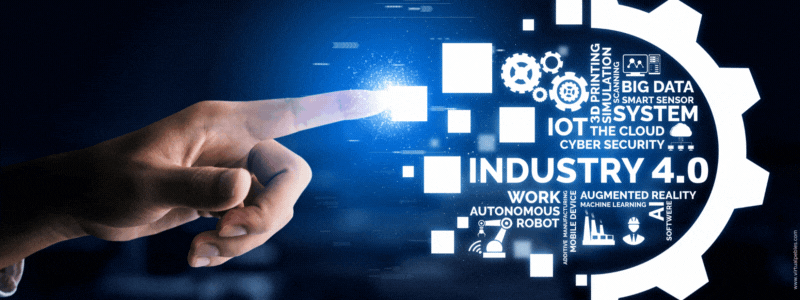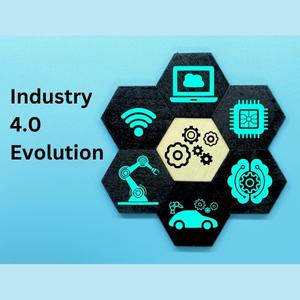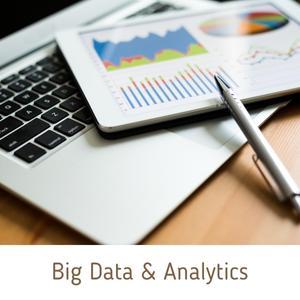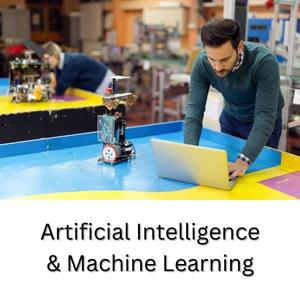Announcement
We are excited to announce the Indus Hackathon 2025, an exhilarating one-day event organized by the CSE Department of Indus University....Read more We are excited to announce the Indus Hackathon 2025, an exhilarating one-day event organized by the CSE Department of Indus University.
26th ISTE Faculty Annual State Convention will be held at Indus University on April 27, 2023....Read more 26th ISTE Faculty Annual State Convention will be held at Indus University on April 27, 2023.
26th ISTE GUJARAT STATE ANNUAL FACULTY CONVENTION & CONFERENCE ON APRIL 27,2023. MORE DETAILS WILL BE SHARED SOON....Read more 26th ISTE GUJARAT STATE ANNUAL FACULTY CONVENTION & CONFERENCE ON APRIL 27,2023. MORE DETAILS WILL BE SHARED SOON.
We are excited to announce the Indus Hackathon 2025, an exhilarating one-day event organized by the CSE Department of Indus University....Read more We are excited to announce the Indus Hackathon 2025, an exhilarating one-day event organized by the CSE Department of Indus University.
26th ISTE Faculty Annual State Convention will be held at Indus University on April 27, 2023....Read more 26th ISTE Faculty Annual State Convention will be held at Indus University on April 27, 2023.
26th ISTE GUJARAT STATE ANNUAL FACULTY CONVENTION & CONFERENCE ON APRIL 27,2023. MORE DETAILS WILL BE SHARED SOON....Read more 26th ISTE GUJARAT STATE ANNUAL FACULTY CONVENTION & CONFERENCE ON APRIL 27,2023. MORE DETAILS WILL BE SHARED SOON.

Change is the only constant in life. In this era, technology keeps on upgrading, and we have seen ground-breaking development.
For any engineer, it is essential to stay up to date with the current trends in the market and keep growing with Following industry trends will provide graduates of B.Tech course with a better understanding of the employment prospects these advancements have created and the abilities required for the field.
We must cooperate with the surroundings so future generations can access enough resources to support humanity. As in the last few decades, the environment has taken a heavy toll. Sustainable engineering is the research process to find a way to protect and conserve our natural resources and use renewable energy.
More and more people worldwide are devoting a great effort to protecting the environment. It seems like more students are choosing to study sustainability than ever before. Sustainable engineering is creating products and techniques that enhance material and energy efficiencies to lessen their adverse effects on the environment while reducing costs.


The industry has evolved by adopting more automated and semi-automated machinery in manufacturing as it migrated from manual production methods to mechanised production procedures. The fourth industrial revolution is referred to as "Industry 4.0." when the concept of intelligent manufacturing or digitised work method is introduced. Along with IoT (Internet of Things), big data and the new communication infrastructure, the device with learning capabilities can communicate and share the gathered data with another device.
This smart industry has helped enhance product quality and optimise your asset utilisation. To succeed in the job market, recently graduated from Engineering college, looking for work in the manufacturing sector need the requisite IT-related abilities. Candidates that are collaborative not only in human-to-human but also in human-to-machine interactions are valued by Hiring companies.
Description of big data is the collection of data that is huge in volume and cannot be dealt with by the traditional data processing method. The massive amount of data combines structured, semi-structured and unstructured data. There are a few benefits of Big Data, like a business can use external information to help them make decisions. Take suggestions from customer feedback to improve customer service. Big Data can be characterised by volume, variety, velocity and variability.
The simple definition of Big data Analytics is it transforms data into information. Big data Analytics is the process of sorting a vast amount of data and analysing it to gather information and insight to utilise it for improving the business. Big data Analytics has several advantages, as it helps make decisions and prevent high risks. Four types of big data Analytics exist Descriptive, Diagnostics, Predictive, and Prescriptive.

Data that is straightforward to understand and interpret is called Descriptive Analytics. Descriptive Analytics enables the organisation to generate data reports on a company's sales, revenue, and profit.
Diagnostics Analytics help the company to find the answer to Why this problem occurs or What causes this to be an issue. The companies use tools for data mining and data recovery.
For Predictive Analytics, the data from the past and present is considered to predict the future. Analytics uses Machine Learning or Artificial Intelligence to analyse current market trends and risk management.
A solution is produced to handle the issue with the help of data collected using Prescriptive Analytics. Prescriptive Analytics heavily depends on the data that AI and Machine learning have acquired.

Artificial intelligence (AI) is the term used to describe how machines simulate or approximate human intelligence. The ability of Artificial Intelligence is that it can reason and execute actions that have the best probability of reaching a particular goal. Artificial intelligence aims to enhance learning, reasoning, and perception through computers.
Machine Learning is a subpart of Artificial Intelligence that enables the system to learn from experience and improve automatically. Machine Learning uses complex algorithms that analyse the patterns in data and allows systems to learn new things from data.
The interaction between machine learning and artificial intelligence has many advantages. Companies discover valuable insights in a broader range of structured and unstructured data sources. Machine learning improves data integrity and uses AI to reduce human error.
The Top engineering colleges in India help engineers develop theoretical knowledge and applicable skills. Keeping up with the Top Engineering Trends can help you find various job opportunities.